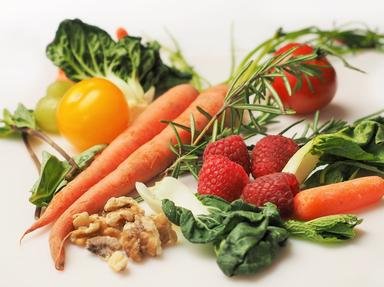Quiz Answer Key and Fun Facts
1. This French dish would have graced many a British dinner party in the '80s. The sauce is orange, but can you guess which bird is being served here?
2. One French pudding involves the use of orange or tangerine zest and juice, and orange liqueur - such as Grand Marnier - as a hot topping for pancakes. What is the name of the pudding pictured here?
3. Which Italian sweets, consisting of deep-fried dough balls flavoured with honey and orange, are shown here?
4. Feijoada is a meat and black bean stew which is customarily served with orange slices. In which South American country is it a national dish?
5. The cocktail depicted here is a Tequila Sunrise, which features orange juice and tequila as two of its main ingredients - but which third ingredient provides the red colouring?
6. In which kind of restaurant would you be most likely to encounter orange chicken on the menu?
7. Pictured here is a British cake which consists of a spongy base topped with orange jelly and chocolate. After which type of orange is it named?
8. These jars contain orange marmalade, a type of preserve often enjoyed as part of a British breakfast. Other varieties of marmalade exist, but which of these fruits would NOT form the basis of a marmalade on its own?
9. Which 'bloody' wine cocktail, popular in Spain and Portugal and served with slices of orange, is pictured here?
10. Oranges can even be used as a flavouring for bread! This orangey bread shown here is called limpa bread, but can you guess which European country it comes from? (Hint: you could eat it on an IKEA table.)
Source: Author
Kankurette
This quiz was reviewed by FunTrivia editor
jmorrow before going online.
Any errors found in FunTrivia content are routinely corrected through our feedback system.

